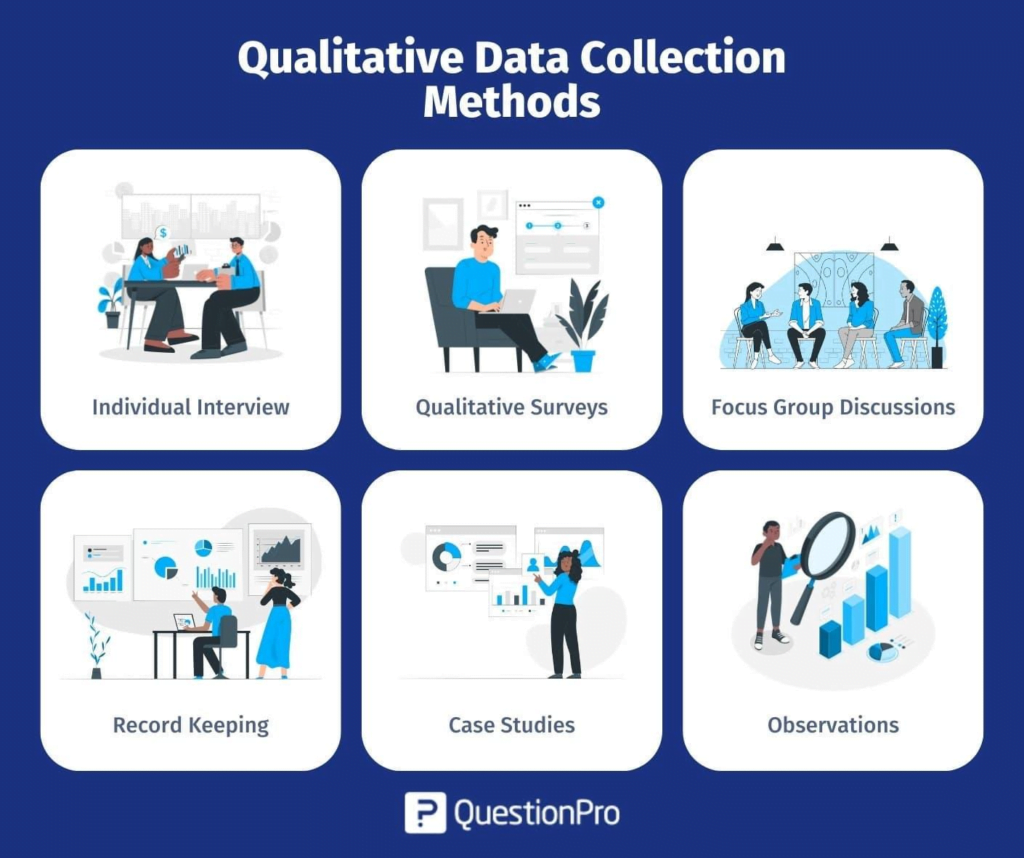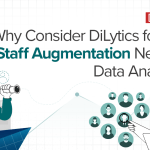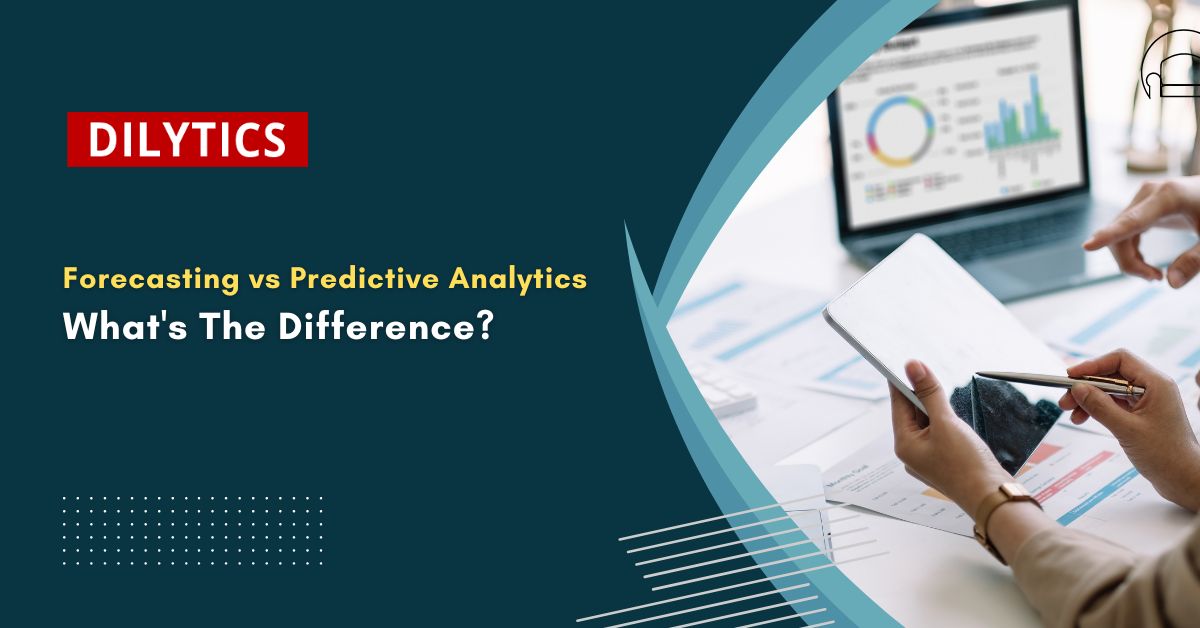In today’s rapidly evolving business landscape, data analytics has become an indispensable tool to anticipate trends and make informed decisions. Among the many data analytics models, forecasting and predictive analytics are two popular techniques used to predict future outcomes. But what are the differences between forecasting vs predictive analytics?
In this article, we’ll explore the key differences between the two. Plus, we’ll examine the numerous techniques of predictive and forecasting analytics to show how they differ in approaches.
This article will help you understand which method is best suited for your company’s goals and needs. Thus, helping you to keep up in your industry and create products and services that can meet the ever-changing demands of your target audience.
So, let’s dive in and explore the differences between forecasting and predictive analytics.
What Is Forecasting Analytics?
This is a data-driven approach that utilizes historical data and machine learning algorithms to predict trends and outcomes. Variables can be predicted using forecasting models like customer preferences, inventory needs, sales projections, and other key performance indicators (KPIs).
With the rise of a highly competitive market ecosystem, companies used forecasting analytics to optimize their operations and make data-driven decisions. This allows businesses to gain a competitive advantage, which is why it has become an essential tool.
For instance, users of Amazon Web Services (AWS) can leverage forecasting analytics to determine the demand for different items. By analyzing historical sales data and customer behavior, Amazon’s machine learning algorithms can forecast which products will be popular in the future, allowing companies to adjust their inventory accordingly.
In addition, this helps AWS users to minimize stockouts and overstocking while also ensuring that popular items are always in stock. This way, forecasting analytics provides them with a competitive advantage in the highly competitive eCommerce market.
What Is Predictive Analytics?
This is an approach that uses relevant data and predictive models to generate detailed insights about future behavior. It uses automated machine learning and statistical approaches to create predictions based on current and historical data.

What’s more, this system utilizes data mining and data science techniques to gain insights from large datasets and make predictions about future events. This is often used with prescriptive analytics, which helps find the best course of action based on the results from the predictive method. One example of using this model is to examine consumer behavior.
By analyzing former data on consumer purchases, businesses can build predictive models that generate insights into future buying patterns. For instance, you can use artificial intelligence (AI) to predict future purchases based on customer demographics, purchase history, and other relevant factors.
The company can then tailor marketing strategies and product offers to specific customer segments, thereby improving its bottom line. Here at Dilytics, we use predictive analysis and AI to predict future events.
How do we do that?
By leveraging and integrating statistical models into our solutions. They’re made to accept and run historical, current, internal, and external data.
Now that you know what predictive and forecasting analytics are, it’s time to review their different types to further understand them. This will show the differences in techniques as to how each of them is implemented.
3 Types Of Forecasting Analytics Techniques
Leveraging forecasting analytics can help businesses, like yours, make strategic decisions, such as resource allocation, capacity planning, and pricing strategies. Effective forecasting techniques require selecting the most appropriate method based on the nature of the problem and available data.
1. Time Series Analysis
Time series analysis is a statistical tool that helps us analyze data over time and find patterns and trends. This can be done for different company departments but for now, let’s apply it to sales. It’s like putting on your detective hat and looking at sales data from different seasons, years, and cycles.
By doing so, we may gain a better understanding of how sales fluctuate and develop forecasts. For instance, if you find that your sales margin always goes up during the holiday season, you can plan your marketing strategies accordingly.
This is also helpful for making decisions based on big data, in addition to being helpful for sales forecasting. You can learn more about customer experience and their preferences by employing this strategy. Then, you can then utilize that information to develop better products and services.
2. Causal Models
Causal models are a set of tools that help us predict what’s going to happen in the future. It’s based on cause-and-effect relationships. They can guide you to understand the relationships between various factors. Simulation models also fall under this technique.

We can use causal models to see how changes in consumer behavior can affect a business in the near future. These models can help you understand customer experience and preferences. Plus, they can also help you identify risk factors that could be bad for a business.
For instance, if a product stops selling well, you can use causal models to figure out what’s causing the problem and fix it. Another example is to use them for the supply chain. They can help you create a forecast of how changes in demand or production will affect inventory levels.
3. Qualitative Techniques
Qualitative techniques are ways to predict what’s going to happen in the future by asking experts in a particular field. Some examples of qualitative techniques are surveys, focus groups, and the Delphi method.

These techniques are important for many reasons, including business forecasting. By asking experts for their opinions, you can estimate future trends and make tactical decisions that will keep you ahead of the competition.
For example, qualitative techniques can predict what your target audience will want in the future. Hence, your company can develop products and services that will meet their needs.
4 Types Of Predictive Analysis Techniques
It’s not just a number or a result, but it is a means of gaining insights from different data to support decision-making. Instead of depending solely on a single number, predictive modeling considers several input variables to forecast future behavior. There are several techniques used in predictive analytics, including decision trees and regression models.
I. Text Analytics
Text analytics is a method that helps extract helpful information from unorganized data sources such as customer feedback, emails, and social media. This entails analyzing huge amounts of text data to spot patterns and trends using natural language processing (NLP) and machine learning techniques.

Sentiment analysis is one use of text analytics that helps businesses learn more about how their clients feel about their goods and services. This allows you to make informed decisions about brand messaging and customer engagement strategies.
II. Regression Models
Regression analysis is a way to study how things are related. It’s used to explore the relationship between several input variables and specific outcomes.
For example, in business analytics, we can use this to predict how many potential customers might buy a product based on past sales data. This is done by looking at a data set and finding patterns that can help us make predictions.
In addition, you can use regression analysis for market progression to predict the growth rate of a particular market based on historical data. This can help you decide when it comes to scaling your business.
III. Decision Trees
Decision trees are a type of predictive model that uses a tree-like graph that shows a model of decisions and their probable consequences. They’re commonly used to solve classification problems by creating a set of if-then rules that classify a dataset into specific outcomes.

Decision trees, for instance, can be used to categorize customers based on their likelihood to purchase a good or service. Also, this technique can help you come up with an effective strategy to streamline your operations.
IV. Neural Networks
Neural networks are a type of computer program or artificial intelligence that works like the human brain. They’re excellent at identifying patterns in data and can be used to predict future events.
Additionally, they’re applied to find intricate linkages and patterns in data. They’re often used in predictive analytics to solve complex problems such as:
- image recognition
- speech recognition
- recommendation systems
- natural language processing
They can handle large amounts of data, learn from experience, and generalize patterns to make accurate predictions on new data.
Have questions about forecasting v/s predicting and want to know how we can help you? Fill in some basic information. Get expert insights and guidance on harnessing the power of data analytics.
Following our discussion of the difference in techniques between predictive and forecasting analytics, it’s time to understand their key differences. It will help you decide which data analytics method best suits your business.
Forecasting Vs Predictive Analytics: The Key Differences
Forecasting analytics and predictive analytics are both ways of utilizing data to make future predictions. They’re also great as problem-solving techniques for businesses. However, there are some distinct differences between these two approaches that should be taken into consideration when deciding which one to use for a specific task.
A. Time Horizon
Forecasting analytics is a technique that uses past data and patterns to make estimations about the future, usually over periods of months or years. Analyzing historical information can help businesses plan for long-term success.
In addition, this method is commonly applied for predicting the future value of important metrics that measure performance, such as revenue, rate of customers leaving, or stock prices.
To illustrate, you could employ forecasting analytics to anticipate the projected revenue growth for the upcoming year by analyzing past sales data and market patterns. This enables you to make informed strategic choices like investing in new products or exploring new markets.
On the contrary, predictive analytics is utilized to make predictions in the short term, usually within a few days or weeks. It considers several data sources, including real-time or present data, external events, and user behavior, to anticipate what is probable to occur in the near future.
For example, a retailer might use predictive analytics to forecast the demand for a specific product based on current inventory levels. Having such insights can help the retailer adjust their inventory and campaign strategies to meet customer demand and maximize sales in the short term.
In a nutshell, forecasting and predictive analytics are valuable approaches in data science. However, their difference in approaches leads to different timeframes. Forecasting is better for coming up with long-term plans for the distant future, while predictive is more helpful for taking quick actions.
B. Data Input
Data inputs are a critical aspect of both forecasting analytics and predictive analytics. The kind and quality of data used can seriously affect how accurate the predictions are from these methods.
When it comes to forecasting analytics, it’s all about using historical data and trends to predict what’s gonna happen in the future. To make these predictions, data mining techniques are used to find patterns and connections in historical data.
For example, let’s say you own a transportation company. You can create a forecast by using past shipment data to predict future demand for your services, taking into account factors like seasonality, economic trends, and customer behavior.
In contrast, predictive analytics uses a wider range of data sources to make predictions, including both historical and real-time data. This data is often separated into input and output variables. The output variable represents the predicted value, and the input variables represent additional factors that could impact the output variable.

For instance, a manufacturing company could use predictive analytics tools to accurately predict the likelihood of machine failures by analyzing factors such as production capacity, maintenance history, and environmental conditions.
By analyzing this data, the company can predict which machines are at risk of breaking down and take proactive measures to prevent downtime and minimize losses.
Overall, both approaches rely on sophisticated data analysis techniques to generate accurate predictions that can inform decision-making in various industries.
C. Accuracy
One important factor that distinguishes predictive analytics from forecasting analytics is the level of accuracy achieved by each approach. Predictive analytics typically has a higher level of accuracy than forecasting analytics, in part due to the use of more diverse and up-to-date data sources.
Let’s take people analytics as an example. It involves using data to make decisions concerning human resources, and the difference in accuracy can be significant.
People analytics leaders, who are responsible for overseeing the development and execution of people analytics capabilities within an organization, often use both predictive and forecasting models to inform decisions related to talent management, employee engagement, and other HR-related functions.
For example, a company might use a predictive analytics model to identify high-performing employees who are at risk of leaving the organization, based on factors such as their job performance, tenure, and compensation.
As such, by identifying each employee group, the company can take proactive steps to retain them, such as offering additional training, development opportunities, or other incentives.
In contrast, a forecasting model might be used to predict future workforce needs based on historical data related to hiring patterns, turnover rates, and business growth projections. Through analyzing past employee data, the company could plan for future talent needs and make informed decisions about recruiting, training, and workforce management.
In general, the higher level of accuracy of predictive techniques can enable people analytics leaders to make more informed and effective decisions related to talent management and other HR-related concerns.
D. Purpose
The objectives of these approaches vary, as forecasting analytics is typically employed for long-term decision-making and strategic planning, whereas predictive analytics is utilized for immediate actions and operational decision-making.
So, forecasting analytics is a method that uses prior data and trends to make predictions of the value of a particular variable, usually over a long period. For instance, a government agency could use forecasting analytics and big data to forecast future population growth in a specific region, based on previous demographic data and migration patterns.
As such, the information can be used to make well-informed decisions on resource allocation and long-term strategic planning for the region.
In contrast, predictive analytics focuses on using real-time data and a wider range of predictive analysis factors to make short-term predictions value of a particular variable. For example, a retailer might use predictive analytics to rank customers effectively, based on factors such as purchase history, demographic data, and real-time browsing behavior.
The results can be used to make quick decisions, like creating customized marketing campaigns or suggesting products to customers.
Conclusion
It’s no surprise that many interchange the two since they’re basically synonyms. Without doing a deep dive into both, it’s easy to get lost and integrate the wrong analytics tool for your company.
However, by understanding their differences, you can leverage big data and analytics to make informed decisions that drive success.
So, between forecasting vs predictive analytics, which is better? Well, that’s up to your business needs.
But honestly, predictive analytics is the better option in today’s business climate. The trends plus the needs and wants of customers are rapidly changing. It’ll allow you to get data quicker using more factors other than historical data.
We, at Dilytics, have used predictive analytics for our solution. That has translated into great success in multiple industries, with our solution being used for different business functions like HR and procurement.
Moreover, our solutions are customizable. Thus, we can help you with your data analytics based on your company’s specific needs. Get in touch with us now and tell us how we can help.





